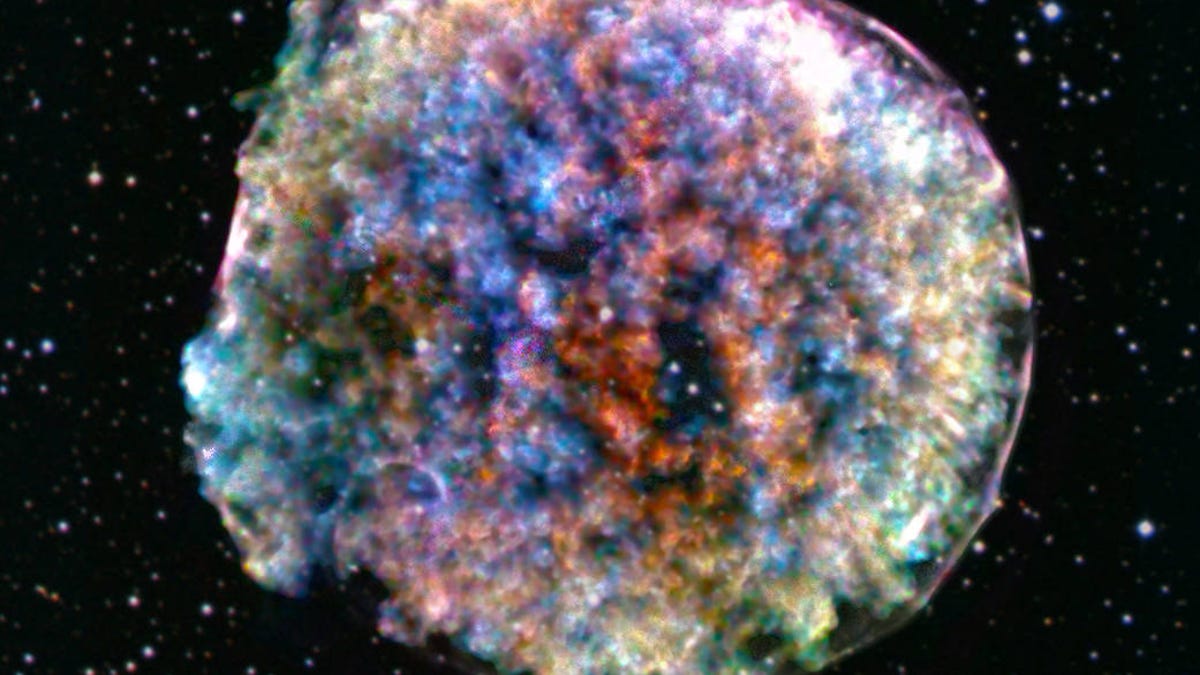NASA converted a star's corpse to sound and the result is surprisingly lively
The remnant of a supernova explosion plays quite a nice tune.

The Tycho supernova remnant, imaged by the Chandra X-ray Observatory.
In 1572, Tycho Brahe noticed what seemed to be a bright new star in the constellation Cassiopeia. The Danish astronomer had actually spotted an ex-star. Today, nearly 450 years later, we can now hear the remnant of a star going out with a bang in a spectacular supernova explosion.
The above image of the Tycho supernova remnant was created using observations from NASA and the Smithsonian's Chandra X-ray Observatory. As if it weren't colorful enough, it's also the latest subject of a fascinating pandemic project taken up by Chandra visualization scientist Kimberly Arcand to convert what's basically a star corpse into sound.
Over the past year the sonification project has built custom sound models to translate several nebulas, galaxies and other cosmic curiosities into aural experiences.
"Each sonification is created to best portray the scientific data in a way that makes the most sense for the specific data, keeping it accurately represented and telling the story, while also providing a new way of conveying meaning through sound," Arcand explained in a NASA Q&A.
The latest addition to the collection is the sounds of the Tycho supernova remnant. The sonification uses the Chandra X-ray data, starting at the center and moving outward. Lower and higher notes are assigned to different colors on the spectrum, with redder hues producing lower notes and blue or violet notes translating to higher notes.
In addition, the individual stars that are visible in the background of the image are plucked as individual notes on a harp. The result is a kind of ethereal cacophony that gives way to a softer serenade for a surprisingly relaxing interpretation of the remains of total annihilation.

